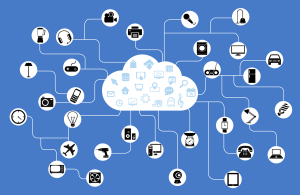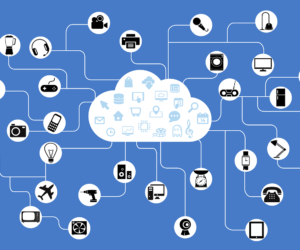Business phone numbers in the time of dropshipping Think about all the time we spend…
The Internet of Things is about telecommunications
 The Internet of Things. IoT. This term has been floating around blogs and business news for a while now. However, it seems that many people simply see it as a buzzword and don’t really understand just what it means exactly. Neither did we, at first, so we’ve done some research and want to share our findings with you. In a nutshell: the Internet of Things refers to the idea that more machines will be connected to each other through the internet than people. The IoT is all about the communication between devices, about connectivity that allows tech ‘things’ to share data without third party (human) interference.
The Internet of Things. IoT. This term has been floating around blogs and business news for a while now. However, it seems that many people simply see it as a buzzword and don’t really understand just what it means exactly. Neither did we, at first, so we’ve done some research and want to share our findings with you. In a nutshell: the Internet of Things refers to the idea that more machines will be connected to each other through the internet than people. The IoT is all about the communication between devices, about connectivity that allows tech ‘things’ to share data without third party (human) interference.
The Internet of Things is about information, knowledge and wisdom
In Microsoft’s March/April 2015 issue of Chief Executive magazine, it is said that IoT is really about three factors that help improve existing business and data analysis strategies: information, knowledge, and wisdom. First, you need the information from the particular ‘thing’ that you are interested in, in this case data that is created and stored within the technology itself. This data can be turned into knowledge of an existing issue or problem. Finally, this knowledge leads to gaining the wisdom needed to fix the issue or improve the process. In the publication, Barb Edson, general marketing manager for Microsoft Cloud & Enterprise, says that it is simply “about taking a step back and understanding how you want to change your business ”. It other words, it seems that IoT is really about gathering the information you need to move your business forward, to innovate.
So what are the practical uses of the IoT?
Deloitte reports that an “analysis of 89 IoT implementations by 20 major providers between 2009 and 2013 revealed 65 percent of use cases were focused on cost reduction and efficiency, while 22 percent focused on risk management, with only 13 percent possibly targeting revenue growth or innovation.” In this period of economic setbacks, it is no surprise that the majority of IoT implementations focus on cost reduction and efficiency. However, with the incredible innovative technology available, it is quite shocking that the focus on growth and innovation is only 13 percent.
Deloitte’s report makes a great case for how IoT can be used to steer progress and innovation within a company:
“The breakthrough potential in IoT lies in uncovering the additional […] value that is enabled by having real-time, context-aware data feeds from multiple sources over time. For example, wearable devices allow companies to digitize employees, which may include tracking and providing feedback on behaviors that affect wellness or job effectiveness, and could improve productivity across the workforce with the right supporting systems.”
By making use of today’s continuous connectivity and data production, this study argues, we can gather the information necessary to improve all kinds of processes that enable companies to become more productive and more innovative, which will lead to more growth.
This all sounds great, doesn’t it? Sure, but something incredibly and increasingly important in this day and age is finding a way to make sure all of these connections are as secure as possible. This is an area in which IoT still seems to be lacking.
IoT and security
A recent study done by Hewitt-Packard uncovers the security threats that exist within IoT technologies. These issues have to be addressed before the IoT can really start to innovate any business.
The 2014 HP Internet of Things Research Study looked into the 10 most popular devices in some of the most common IoT niches (such as TVs and home alarms). Of their findings we found the following to be the most interesting:
- 90 percent of these devices collected at least 1 piece of personal information.
- 80 percent of devices had no sophisticated password requirements, allowing combinations such as ‘1234’ to be accepted as a password.
- 70 percent of devices did not use encrypted networks, which is especially important in the transport of sensitive information.
With the amount of information being sent over these systems, including things as sensitive as bank information and social security numbers, it is astounding that such privacy concerns exist. Regardless of this ‘doom-and-gloom’ look at IoT devices, HP offers three solid calls to action for the manufacturers of IoT devices: “(1) Conduct a security review of your device and all associated components, (2) Implement security standards that all devices must meet before production, and (3) Ensuring security is a consideration throughout the product lifecycle”.
Once these security risks are properly addressed, we can be sure to expect big things from the Internet of Things. Good or bad? As with all technological changes it can go either way, but we are positive!
What do you think? Let us know by leaving us a comment below!





Comments (0)